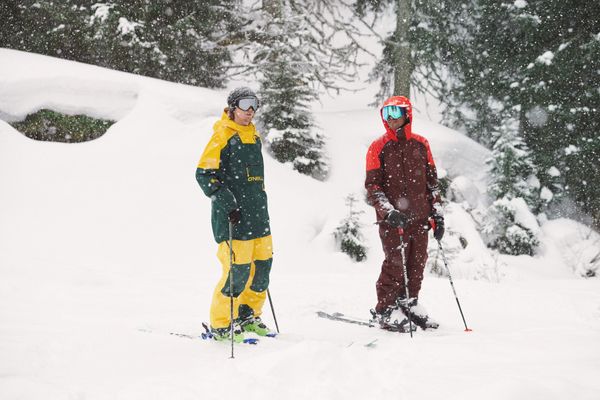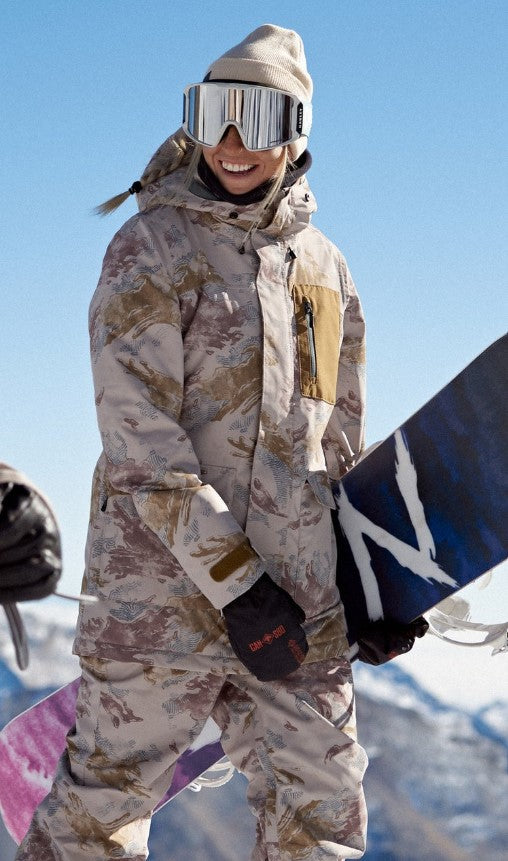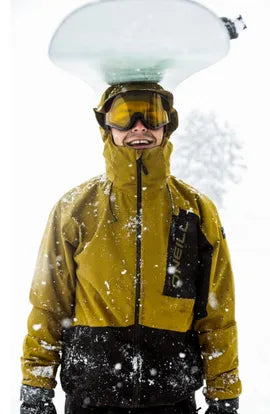Water columns and breathability in ski jackets and pants explained


The water column (WC) is an indication of the waterproofness of your ski clothing. To be more exact, it states the pressure your ski jacket or pants can withstand before they get penetrated by water. Pressure is commonly measured in millibars or Pascal, but in the textile industry, it is stated in mmH20 (water column in millimetres).
Why, you ask? Well, because waterproofness is measured by placing a long tube filled with water on the fabric – a test known as the hydrostatic head test. The higher the water column in the tube, the higher the water pressure, and thus the material’s waterproofness. For instance: if the tube is filled with 5.000 mm (5 metres) of water before it penetrates the material, the water column is 5.000 (often noted as 5K). All waterproof O’Neill snow gear has a rating of at least 10K.
In the context of outerwear, the terms waterproof,water-repellent and water-resistant are often mixed up. The thing is that they do not mean the same. Water-repellent is a general term that refers to clothing that is able to withstand (some) water. This means that both waterproof and water-resistant clothes can be called water-repellent. In general, water-resistant outdoor clothing offers a way lower level of water-repellancy than waterproof clothing. To be called water-resistant, a DWR coating suffices, while waterproof clothing offers serious protection against rain showers, and is more technical in terms of fabrics and coatings.
The breathability rating expresses the amount of water vapour that can pass through your jacket or pants. Breathability is usually stated in g/m2/24hr. In other words: the amount of water, by weight, that can get through a square metre of fabric in 24 hours. This number is also known as the Moisture Vapour Transmission (MVT) rating. The higher the number, the better the breathability. Besides breathable fabric, a lot of performance snow jackets and pants also feature ventilating options to let warmth and moisture escape.


Waterproof ratings of ski jackets start at 3.000 mm. Nevertheless, ski clothing with a water column of 3K can only withstand a limited amount of water. These jackets and pants are great for spring days and some light drizzle, but won’t keep you dry in more demanding conditions.
Clothing with a 5K waterproof rating blocks out some water, but isn’t able to withstand snow storms or heavy rain showers. Jackets and pants with a 5K waterproof rating are OK for exploring the resort or the park on nice days, but aren’t recommended when you head off-piste or when you are facing tough weather conditions
A water column rating of 10K is the industry standard for snow jackets and pants. It’s also the standard in O’Neill snow gear. Jackets and pants with 10K waterproofing will easily keep you dry on regular riding days. For the most demanding conditions, however, you can go for an even higher water column rating.
When we get above 20.000 mm, we get into the high-performance realm. Most brands’ high-end lines boast water columns of 20K or above. Above 25K, not even a single drop of water will get in. Our own 30K/30K membrane technology offers this top-level protection, guaranteeing to keep you dry even in the harshest conditions.
cart.general.warning
0 comments